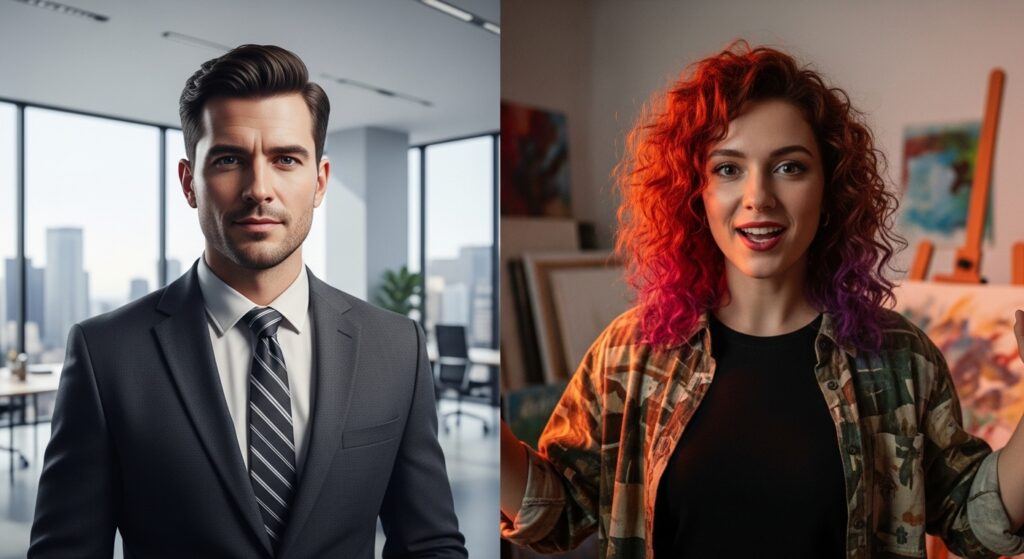HeyGen vs Synthesia is one of the most common AI video tool comparisons out there. They both promise to turn a plain script into a full video with a talking AI avatar, no camera or crew required. Cool, right? But if you’ve tried either one or are staring at their pricing pages wondering which to pick, it’s not always obvious who each one’s really built for.
Let’s skip the fluffy intros and get straight to it. HeyGen is for creators, marketers, and small teams who need to pump out lots of content fast. Synthesia leans more corporate think internal training, HR rollouts, multilingual support, and the kinda polished output that feels made for slide decks.
This article includes affiliate links. If you sign up through these links, I may earn a commission at no extra cost to you.
HeyGen vs Synthesia: What’s the Real Difference?
Here’s the short version: HeyGen gives you room to play. It’s flexible, quick, and doesn’t nickel and dime you with weird export limits. Synthesia? It’s more polished, more rigid, and better suited for teams who need formal stuff that checks compliance boxes.
Pricing Breakdown
HeyGen‘s entry plan is 29 dollars a month. That gets you unlimited video creation (with some limits on video length), a custom avatar built from a photo, and voice cloning that’s actually pretty good. You can upload your script, pick a voice, generate, and you’re off. The vibe? Efficient and kinda fun.
Synthesia charges the same at the low tier at 30 dollars, but you’re capped at 10 minutes of video… total. Not per video. Per month. That alone tells you who they’re targeting: folks who want a couple of polished videos, not a daily stream of content.
What about the avatars and voices?
Synthesia’s avatars do look more refined. If you’re presenting to clients or execs, you’ll probably appreciate the detail. Their facial movements are tight, and there’s less of that uncanny valley stiffness you sometimes see with AI avatars.
That said, HeyGen‘s avatars are holding their own and improving. You can generate one from your own face, dress it up, and even change its outfit with AI. Some of the styles are definitely creator-first (you’ll see what I mean), but that’s the point. It’s meant for YouTube, Instagram, and short-form ads. It’s not trying to act like a corporate spokesperson.
As for voices, both do the job. Synthesia supports over 120 languages and lets you switch between them on the fly. If you’re a global team trying to reach five markets in five languages, that’ll save you time. HeyGen supports around 100, which still covers most people’s needs.
So which one feels easier to use?
HeyGen‘s interface is built for speed. It’s click, type, go. You don’t need onboarding videos to figure it out.
Synthesia takes a bit more time to learn and not in a bad way, just in the “this is built for teams with systems” kinda way. Once you’re used to it, it’s smooth, but not as quick to jump into cold.
Templates and Workflow Style
Both offer templates, though their styles couldn’t be more different.
HeyGen‘s got stuff for TikToks, social promos, and product explainers.
Synthesia‘s templates lean corporate: training modules, HR updates, compliance explainers.
Nothing wrong with that however it just depends on what you’re making.
Okay, what’s the catch?
If you’re a creator or small team trying to crank out content weekly or even daily, Synthesia’s minute limits are gonna get old real quick. To make more, you’ll need to upgrade, and those plans aren’t cheap.
HeyGen gives you more breathing room. Unlimited video creation, voice cloning built in, plus creative stuff like face swapping and AI-generated outfits. It’s more playful and less boxed in.
That said, if you’re working in a regulated space, or if your videos have to look buttoned up and multilingual from the start, Synthesia might still be your best bet.
HeyGen vs Synthesia: Which One Should You Pick?
Use HeyGen if you want to create a lot, experiment often, and keep things flexible without spending extra every time you hit ‘render.’ It’s fast, fun, and lets your content breathe.
Use Synthesia if you’re on a team that needs clean, consistent, globally usable videos and you’re okay with paying for polish and structure.
Try both. See which one actually fits the way you work. Because it’s not just about features it’s about how fast you can turn ideas into content without pulling your hair out.

